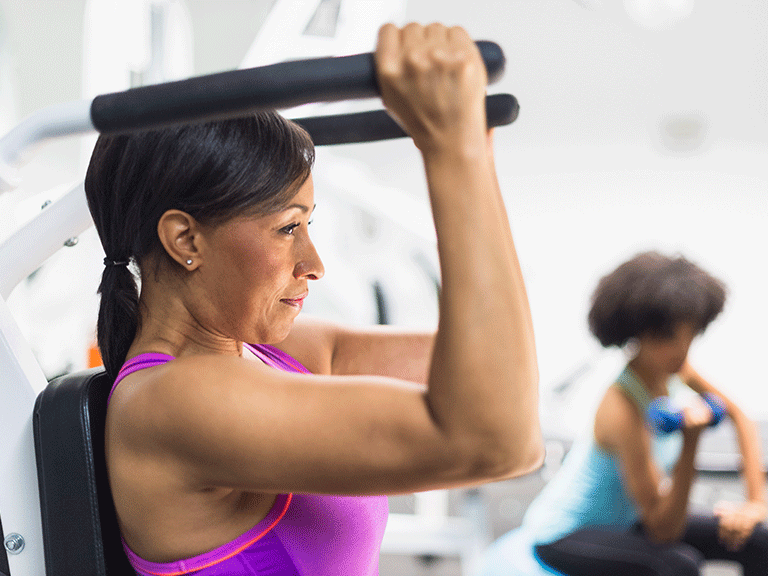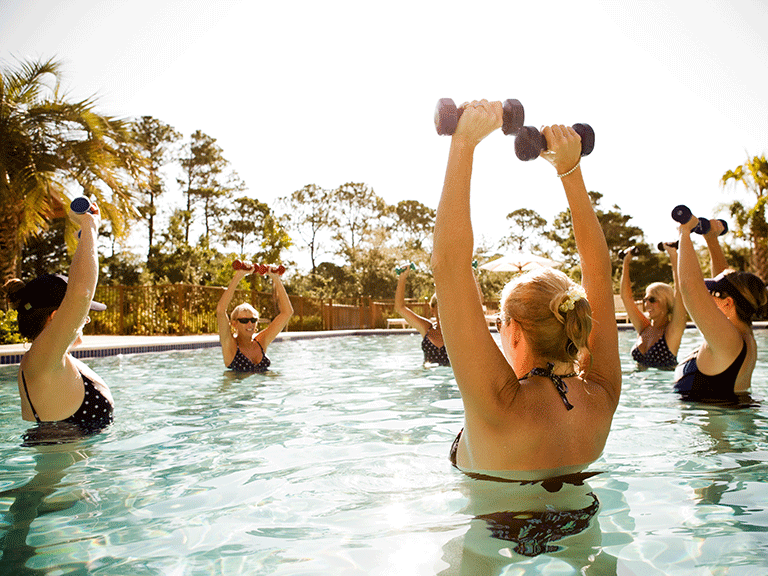Fitness Report Writing Guide For Marines
Whether you're 30 or 60, here's what your exercise routine should look like.
Unfortunately, those knee creaks and back cracks you hear as you get older are your body's way of telling you things are changing. And as your body changes, so does the impact that exercise will have on it. Staying fit is just as important in your 50s as it is in your 30s, but it's essential to switch up your routine. While everyone is different, consider the following age-based fitness guidelines.
In your 30s
 What's happening: In your 30s, strength, endurance and coordination can come together to create a super-powered you. On the other hand, metabolism will also start to slow during this decade. According to the American Council on Exercise (ACE), basal metabolic rate decreases by one to two percent per decade, so after a person reaches 20, daily energy expenditure decreases by about 150 calories per decade.
What's happening: In your 30s, strength, endurance and coordination can come together to create a super-powered you. On the other hand, metabolism will also start to slow during this decade. According to the American Council on Exercise (ACE), basal metabolic rate decreases by one to two percent per decade, so after a person reaches 20, daily energy expenditure decreases by about 150 calories per decade.
Make the best of it: The American Council on Exercise suggests incorporating strength training and muscle building into your fitness routine to help maintain metabolically active muscle mass, while cardiovascular physical activity will help you maintain a high level of energy expenditure and prevent increased fat mass.
In your 40s
 What's happening: For many women, hormones go haywire during this period. Levels of estrogen, progesterone and human growth hormone decline, and metabolism takes a nosedive, too.
What's happening: For many women, hormones go haywire during this period. Levels of estrogen, progesterone and human growth hormone decline, and metabolism takes a nosedive, too.
Make the best of it: Similar to in your 30s, building muscle is key during this decade to ward off unwanted fat, but you may need to do more of it to keep at your optimal weight. Keep up with strength training to give your metabolism a boost after you've done some cardio. One study of overweight adults showed that aerobic training helped reduce fat mass, while resistance training helped increase lean body mass.
In your 50s
 What's happening: Your metabolism is still slowing. Bone density loss increasingly occurs as you age, particularly after you experience menopause. This is also when many people develop their first signs of heart disease.
What's happening: Your metabolism is still slowing. Bone density loss increasingly occurs as you age, particularly after you experience menopause. This is also when many people develop their first signs of heart disease.
Make the best of it: Keeping a regular routine is essential at this age. The American Heart Association recommends at least 150 minutes per week of moderate exercise or 75 minutes per week of vigorous exercise, as well as high-intensity strength training twice a week.
In your 60s and beyond
 What's happening: By 65, men catch up to women and begin to lose bone mass at the same rate. Achy joints and heart disease are on the rise during this decade and beyond, too.
What's happening: By 65, men catch up to women and begin to lose bone mass at the same rate. Achy joints and heart disease are on the rise during this decade and beyond, too.
Make the best of it: If it seems like it's all downhill once you hit your 60s, fear not—exercise is an excellent deterrent to most ailments age may throw your way. According to an article from Harvard Health Publications, cardiologist and fitness expert Dr. Aaron Baggish recommends that people in the 60- to 80-year-old age group should do an 80–20 split between moderate aerobic activity, like a brisk walk, and resistance exercise. Regular exercise in older people may also improve balance and coordination and reduce incidences of coronary heart disease, hypertension, colon cancer, depression and anxiety, according to the American Heart Association.
Fitness Report Writing Guide For Marines
Source: https://www.bhg.com/featured/StriveFitnessByTheDecade
Posted by: bustostholdrie1970.blogspot.com

0 Response to "Fitness Report Writing Guide For Marines"
Post a Comment